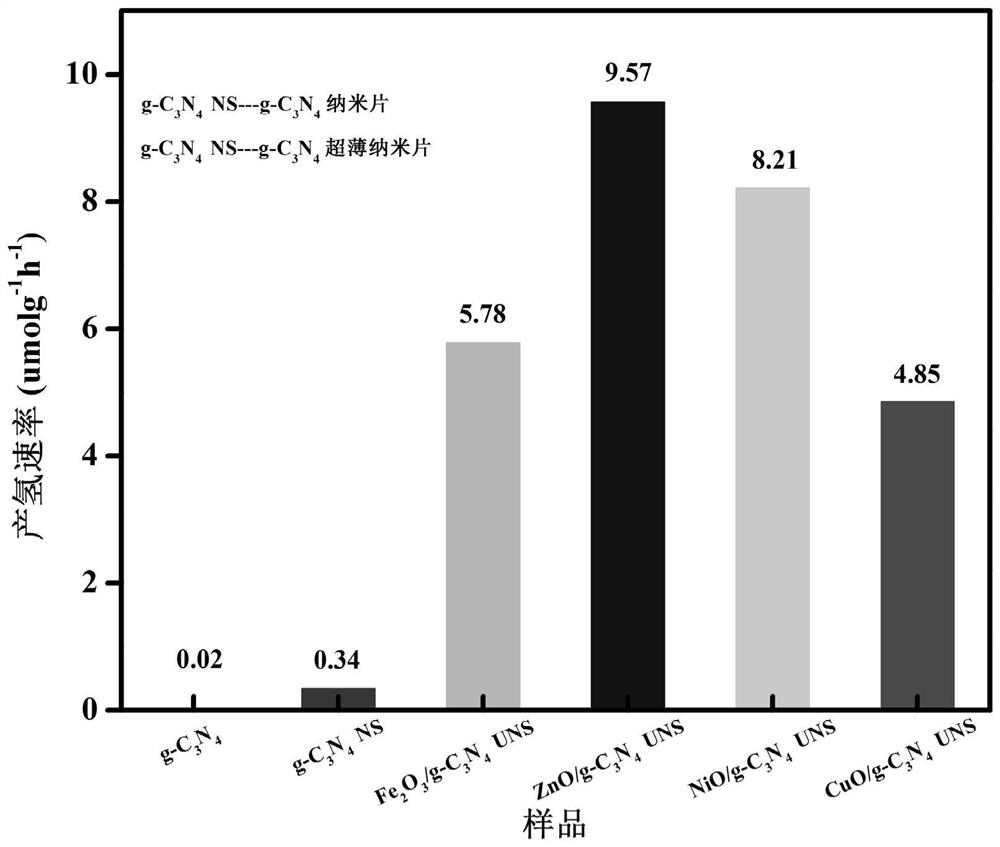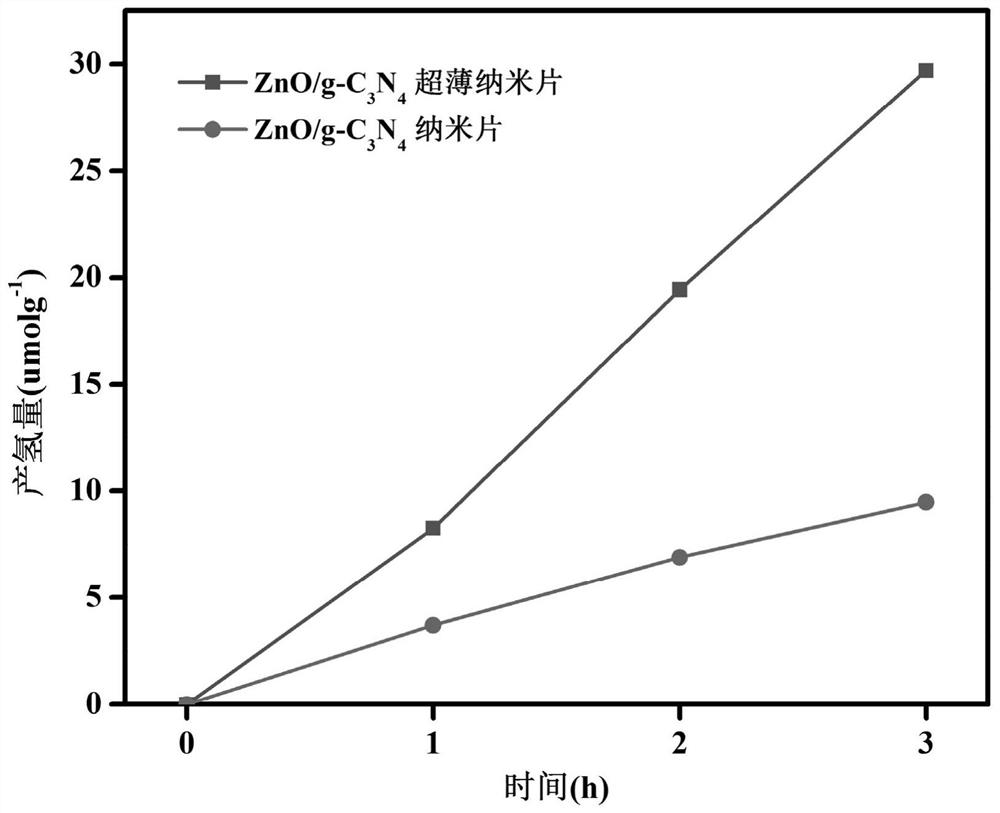Composite photocatalyst as well as preparation method and application thereof
A technology of catalyst and composite light, which is applied in the direction of catalyst activation/preparation, chemical instruments and methods, physical/chemical process catalysts, etc., can solve the problems of poor hydrogen production activity, achieve low cost, improve electron-hole separation efficiency, and operate Simple and convenient effect
- Summary
- Abstract
- Description
- Claims
- Application Information
AI Technical Summary
Problems solved by technology
Method used
Image
Examples
Embodiment 1
[0057] Fe in this example 2 O 3 / g-C 3 N 4 The preparation steps of the composite photocatalyst are as follows:
[0058] g-C 3 N 4 Preparation of materials: put 10 g of urea in a crucible, and place it in a muffle furnace for calcination at 550°C for 2 hours, with a heating rate of 5°C / min. The calcined product is washed with distilled water, filtered, dried in an oven and ground to obtain g-C 3 N 4 Material.
[0059] Vapor intercalation exfoliation g-C 3 N 4 Materials and Fe 2 O 3 Precursor preparation: 200 mg g-C 3 N 4 The material, 1 g of ammonium chloride and 100 mg of ferric chloride were dissolved in 30 mL of deionized water and sonicated for 10 minutes until uniformly dispersed. It was then placed in a fume hood and heated at 90°C with constant stirring with a glass rod until the precursor was obtained.
[0060] Fe 2 O 3 / g-C 3 N 4 Preparation of composite photocatalyst: The precursor was placed in a porcelain boat, calcined in a muffle furnace at 600...
Embodiment 2
[0062] This example ZnO / g-C 3 N 4 The preparation steps of the composite photocatalyst are as follows:
[0063] g-C 3 N 4 Preparation of materials: put 10 g of urea in a crucible, and place it in a muffle furnace for calcination at 550°C for 2 hours, with a heating rate of 5°C / min. The calcined product is washed with distilled water, filtered, dried in an oven and ground to obtain g-C 3 N 4 Material.
[0064] Vapor intercalation exfoliation g-C 3 N 4 Materials and ZnO precursor preparation: 200 mg g-C 3 N 4 The material, 1.4 g of ammonium nitrate and 75 mg of zinc nitrate were dissolved in 30 mL of deionized water and sonicated for 10 minutes until uniformly dispersed. It was then placed in a fume hood and heated at 75°C with constant stirring with a glass rod until the precursor was obtained.
[0065] ZnO / g-C 3 N 4 Preparation of composite photocatalyst: The precursor was placed in a porcelain boat, calcined at 500 °C for 2 h in a muffle furnace, and the heating ...
Embodiment 3
[0067] This example NiO / g-C 3 N 4 The preparation steps of the composite photocatalyst are as follows:
[0068] g-C 3 N 4 Preparation of materials: put 10 g of urea in a crucible, and place it in a muffle furnace for calcination at 550°C for 2 hours, with a heating rate of 5°C / min. The calcined product is washed with distilled water, filtered, dried in an oven and ground to obtain g-C 3 N 4 Material.
[0069] Vapor intercalation exfoliation g-C 3 N 4 Materials and NiO precursor preparation: 200 mg g-C 3 N 4 The material, 1.3 g of ammonium acetate and 80 mg of nickel acetate were dissolved in 30 mL of deionized water and sonicated for 10 minutes until uniformly dispersed. It was then heated at 80°C in a fume hood with constant stirring with a glass rod until the precursor was obtained.
[0070] NiO / g-C 3 N 4 Preparation of composite photocatalyst: The precursor was placed in a porcelain boat, calcined in a muffle furnace at 600 °C for 2 h, and the heating rate was ...
PUM
| Property | Measurement | Unit |
|---|---|---|
| thickness | aaaaa | aaaaa |
| thickness | aaaaa | aaaaa |
| thickness | aaaaa | aaaaa |
Abstract
Description
Claims
Application Information
 Login to View More
Login to View More - R&D
- Intellectual Property
- Life Sciences
- Materials
- Tech Scout
- Unparalleled Data Quality
- Higher Quality Content
- 60% Fewer Hallucinations
Browse by: Latest US Patents, China's latest patents, Technical Efficacy Thesaurus, Application Domain, Technology Topic, Popular Technical Reports.
© 2025 PatSnap. All rights reserved.Legal|Privacy policy|Modern Slavery Act Transparency Statement|Sitemap|About US| Contact US: help@patsnap.com



